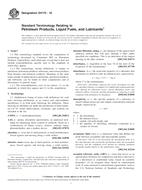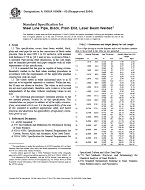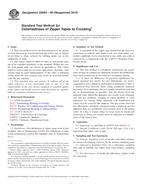1.1 This guide describes design, fabrication, shipping, handling, jobsite storage, and installation of prefabricated panel and H-Bar insulation systems for vessels, ducts, and equipment operating at temperatures above ambient. Typical applications include, but are not limited to, air and gas ducts, steam generating units, air quality control systems, fans, storage tanks, process vessels, and coke drums
1.2 The insulation described herein is limited to systems consisting of insulating units specially designed to fit the surfaces to be insulated, and engineered for the service and environmental requirements. The insulation unit may also include special design features which facilitate the removal and replacement for maintenance and inspection.
1.3 When prefabricated panels are used, each insulation unit factory preassembled and typically comprised of the insulation, an outer lagging to which the insulation is attached, an inner retaining wire mesh, optional foil lining, and means for mechanically securing multiple units together in an assembly.
1.4 H-bar systems represent insulation units that are typically comprised of the insulation, outer lagging and a uniquely configured subgirt design which both supports the insulation and provides a means for mechanically securing multiple units together in an assembly. The design of the subgirt creates an “H“ configuration which is fabricated from light gauge sheet metal. The subgirt components consist of: (1) a “J-bar“ shape which frames the perimeter edges of the surface to be insulated, holds the insulation in place along the outer edge and provides a screen attachment point for the outer lagging; (2) the “H-bar“ shape is placed at defined intervals. The web section of the “H-bar“ supports the insulation while the exterior flange allows for the outer lagging to be attached with threaded fasteners.
1.5 The values stated in inch-pound units are to be regarded as standard. The values given in parentheses are mathematical conversions to SI units that are provided for information only and are not considered standard.
1.6 This standard does not purport to address all of the safety concerns, if any, associated with its use. It is the responsibility of the user of this standard to establish appropriate safety and health practices and determine the applicability of regulatory limitations prior to use.
Note 1 – When prefabricated panel or H-Bar insulation systems are specified, Test Methods C 167, C 177 and C 1061, Material Specifications A 36/A 36M, A 463/A 463M, B 209, C 612, and Terminology C 168 should be considered.
Product Details
- Published:
- 06/01/2009
- Number of Pages:
- 4
- File Size:
- 1 file , 73 KB
- Redline File Size:
- 2 files , 150 KB


